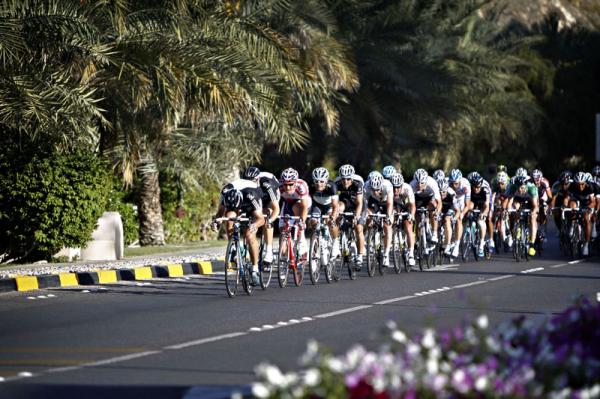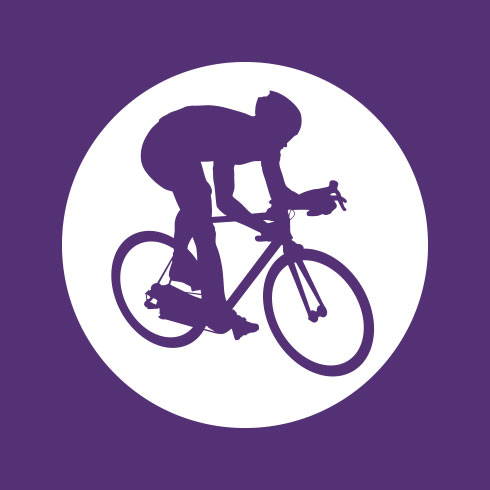Cyclingnews Fitness Q&A - February 1, 2012
Your fitness questions answered

Topics: Food intake/Nutrition, Power differences in pedal strokes, 10 mile time trials
Got a question for the fitness panel? Send it to fitness@cyclingnews.com. Try and include as much relevant information as you can think of. Remember, the more details you can provide the better the panel can tailor their response to your question.
Emails may be edited for length or clarity, but we try to publish both questions and answers in their entirety.
To find advice that relates to you more easily:
Power differences in pedal strokes
The latest race content, interviews, features, reviews and expert buying guides, direct to your inbox!
Food intake, nutrition planning
Hi All
Could you please advise best food intake regime prior and post exercise, I'm about to hopefully start shedding approximately 50kgs through both cycling and boxing.
I'm currently working nightshift from midnight until around 8:30am and I plan to train after work then go to sleep.
At present my diet needs changes in both content and quantity but I also need a few pointers with regards to when is ideal for eating and what I should eat at certain times
Appreciate any help you can provide
Thanks
Mark
Pamela Hinton says:
Hi Mark,
Although each athlete's training diet should be individualized to meet their particular needs, a few general principles apply. Obviously, if you want to lose body fat, you must expend more energy than you consume. You can accomplish this both by increasing your training volume and/or intensity and by reducing your energy intake. However, you do not want to short change your body on the fuels needed for training or on the nutrients needed for recovery and training adaptation.
If you are regularly(i.e., multiple times per week) training for more than 90 minutes at a time at moderate-to-high intensity, you need to be sure to be sure that you are eating enough carbohydrate. Here’s the reason that dietary carbohydrate is essential for endurance athletes who train for prolonged periods of time. Our bodies prefer to use carbohydrates and fats (not protein) for energy during exercise. At rest or during low-intensity exercise (<50% of VO2max), the preferred fuel is fat. This fat can come from our diets if we've just eaten or from our fat stores if we're between meals. As exercise intensity increases, our bodies have to shift from fat to carbohydrate to generate energy.
At maximal exertion, we use only carbohydrate. In situations where oxygen demand is high (i.e., high-intensity exercise), carbohydrates have an advantage over fats because less oxygen is required to produce a given amount of energy. Dietary carbohydrate is important because the carbohydrate stored in our bodies as glycogen in the liver (240 kcal) and muscle (1400 kcal) is in limited supply. When our glycogen is gone (usually after 1.5-2 hours of exercise), we literally run out of fuel and have to markedly decrease our exercise intensity (i.e., switch back to using fat).
There are two strategies to prevent depletion of glycogen during
exercise: start with “full” glycogen stores and consume carbohydrate during exercise. To maintain glycogen stores, endurance athletes should consume 6-10 g of carbohydrate per kg of body weight (target body weight) in their usual diet. The pre-training meal should provide 100-300 g of carbohydrates, depending on workout duration and intensity. During a training ride of >90 minutes, the recommended intake is 30-60 grams of carbohydrate per hour. Drinking 16-32 ounces of a commercial fluid-replacement beverage that contains 4-8% carbohydrates every hour would meet this guideline. Most energy gels contain about 25 g of carbohydrate, and these work fine as long as they are taken with water to avoid gastrointestinal distress.
Post-exercise nutrition is focused on recovery, which includes both repletion of glycogen stores and synthesis of skeletal muscle protein.
The optimal way to replete glycogen stores is to consume 1.5 g carbohydrate per kg of body weight (target body weight) within 30 minutes after exercise and again every 2 hours for the next 4-6 hours.
Carbohydrates that are easily digested and absorbed, i.e., high glycemic index, will allow for rapid repletion of muscle and liver glycogen. Exercise increases the rate of protein breakdown and synthesis in skeletal muscle and, with adequate nutrition, it can have an anabolic effect on skeletal muscle. Carbohydrate consumed post-exercise is beneficial because it reduces the rate of protein degradation.
However, to increase protein synthesis and achieve a net increase in muscle mass, it is important to consume protein after exercise. Studies have shown that consuming about 0.2 g of protein per kg of body weight per hour during the first 2-3 hours post exercise results in net protein synthesis.
While these guidelines are by no means comprehensive, they should provide some guidance on pre- and post-training nutrition.
Good luck!
Pam
Scott Saifer adds:
Hi Mark,
Take a look at the article archives here and choose the one called Four Nutritional Plans for Endurance Athletes (http://www.wenzelcoaching.com/Archives.htm). There's a pdf you can download that talks about what to eat before, during, after and between rides to get lean and maintain energy and enthusiasm for training.
Power difference in pedal stroke
Hi
Cheers
Scott Saifer says:
Hi Al,
You can test the theory that you are making different power on the two sides without buying force pedals if you can borrow a Computrainer. They have them in some cycle-training classes. They have a function called "Spin Scan" that lets you compare the two sides of your pedal stroke by giving you a graph of power vs pedal position around the stroke.
You should look to improve your fitness on both sides as much as possible unless the imbalance is causing other problems such as one-sided back-soreness or saddle sores. If asymmetric pedaling is causing problems, you should certainly strive to correct it. Otherwise, make both legs as powerful as possible and don't worry about one doing more work than the other.
Correcting such an imbalance is a many-month process. If there is a significant difference in strength, start by working on that by doing workouts that are challenging for the weaker leg but easy for the strong leg. if you have a lazy leg rather than a weak leg, it is often possible to correct it by such simple maneuvers as focusing on the weaker leg by counting cadence on the down-stroke on that side.
Good luck!
Training for a 10 mile time trial
Hi
I was wondering what would be best way to train for a 10 mile time trial on rollers.
At the moment I work using heart rate, my max is 181, and I try to aim for my average 10 mile time trial rate of 164 beats per minute when I do a training effort.
Guy
Scott Saifer says:
Hi Guy,
I'll assume you are well trained for your other races, with a massive base and structured transition to intensity and that you are going well in your longer races. If any of that is not true, you need to back up and look at the bigger picture again.
Again, assuming you are well trained for road racing, there's not much fitness change you are going to accomplish as you prepare to TTs. Rather, you need to dial in your pacing and gearing strategies. Ideal pacing for a TT allows you to maintain power the whole time, with near exhaustion at the end. Since you are doing the training on rollers, you don't need a power meter to tell you if you are making steady power or not since power and speed correlate perfectly on rollers.
So, pick a heart rate you think will be sustainable for 10 miles. Warm up thoroughly and then hit that heart rate. Note the speed you make after a minute or so and then stick to that speed for 10 miles, if you can. If you can't, start a few tenths slower next time. If you can, start a tenth higher next time. Do this sort of workout no more than once per week.
When as you find the highest pace you can sustain for ten miles, pay attention to the feel as well as the heart rate throughout the session. That's the feel and heart rate you are shooting for in your events.
Make sure you have a huge fan and plenty of cool air blowing over you when doing hard workouts on rollers or a trainer.
The Cyclingnews Form & Fitness panel
Scott Saifer (www.wenzelcoaching.com) is head coach, CEO of Wenzel Coaching.com and has been coaching cyclists professionally for 18 years. He combines a master's degree in Exercise Physiology with experience in 20 years of touring and racing and over 300 road, track and MTB races to deliver training plans and advice that are both rigorously scientific and compatible with the real world of bike racing.
Scott has helped clients to turn pro as well as to win medals at US Masters National and World Championship events. He has worked with hundreds of beginning riders and racers and particularly enjoys working with the special or challenging rider. Scott is co-author of Bike Racing 101 with Kendra Wenzel and his monthly column appears in ROAD Magazine.
Steve Hogg has owned and operated Pedal Pushers since 1986, a cycle shop specialising in rider positioning and custom bicycles. In that time he has positioned riders from all cycling disciplines and of all levels of ability with every concievable cycling problem. Clients range from recreational riders and riders with disabilities to World and National champions. He can be reached at: www.stevehoggbikefitting.com
Kelby Bethards, MD received a Bachelor of Science in Electrical Engineering from Iowa State University (1994) before obtaining an M.D. from the University of Iowa College of Medicine in 2000. Has been a racing cyclist 'on and off' for 20 years, and when time allows, he races Cat 3 and 35+.
He is a team physician for two local Ft Collins, CO, teams, and currently works Family Practice in multiple settings: rural, urgent care, inpatient and the like.
Pam Hinton has a bachelor's degree in Molecular Biology and a doctoral degree in Nutritional Sciences, both from the University of Wisconsin-Madison.
She did postdoctoral training at Cornell University and is now an associate professor of Nutrition and Exercise Physiology at the University of Missouri-Columbia where she studies the effects of energy balance on bone health. She has published on the effects of cycling and multi-day stage racing on bone density and turnover.
Pam was an All-American in track while at the UW. She started cycling competitively in 2003 and is a five-time Missouri State Road Champion, racing for Dogfish Racing Team.
Carrie Cheadle, MA (www.carriecheadle.com) is a Sports Psychology consultant who has dedicated her career to helping athletes of all ages and abilities perform to their potential. Carrie specialises in working with cyclists, in disciplines ranging from track racing to mountain biking. She holds a bachelors degree in Psychology from Sonoma State University as well as a masters degree in Sport Psychology from John F. Kennedy University.
Dave Palese (www.davepalese.com) is a USA Cycling licensed coach and masters' class road racer with 16 years' race experience. He coaches racers and riders of all abilities from his home in southern Maine, USA, where he lives with his wife Sheryl, daughter Molly, and two cats, Miranda and Mu-Mu.
Dario Fredrick (www.wholeathlete.com) is an exercise physiologist and head coach for Whole Athlete™. He is a former category 1 & semi-pro MTB racer. Dario holds a masters degree in exercise science and a bachelors in sport psychology.
